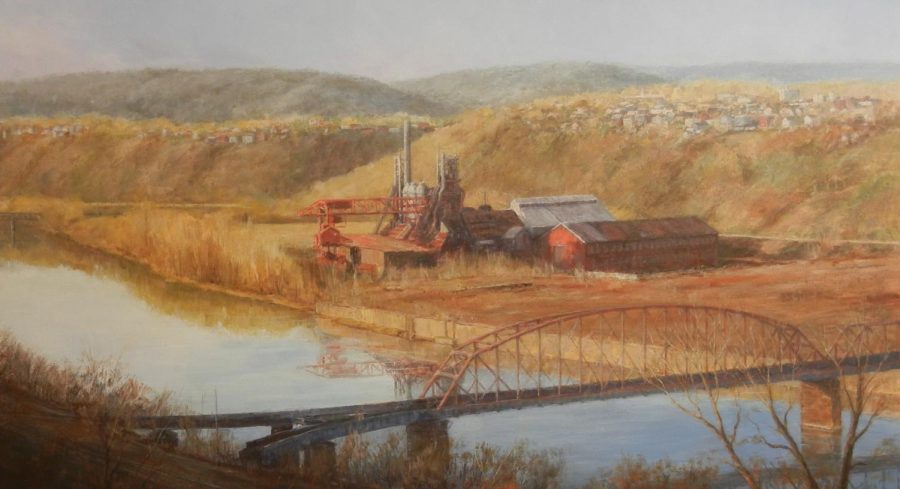Redefining the Rust Belt
As misconceptions fade, the region’s past should be embraced, not shunned.
Pennsylvania State University at New Kensington
The Rust Belt is often perceived as having a faltering economy, yet many cities are finding renewal with jobs based in education, technology, and medicine.
To a casual observer, the term “Rust Belt” may be linked with economic decay — cities past their industrial prime, with falling population and little opportunity for growth. As the Rust Belt has worked to reinvent its economy, such misunderstandings have begun to clear up, much like the pollution that once sat heavy in the air across the region. However, the best examples of the region’s rebirth have integrated pieces of its industrial past while also modernizing its economy. Many residents of the Rust Belt — including myself — take pride in this union of history and technology, and to us, the region’s name no longer implies a tired stereotype; it means an extraordinary comeback story.
But to grasp the Rust Belt’s economic recovery, it is essential to understand what caused its decline. Beginning in the late 1970s, the US saw a drop in manufacturing jobs as companies moved their factories out of the country to take advantage of low-wage workers. The loss of manufacturing jobs was (and continues to be) a nationwide issue, but states that relied on heavy industry as their economic basis were particularly hard hit. From 1950 to 1980, Rust Belt states — Michigan, Ohio, and Pennsylvania, among others — lost two-thirds of all their manufacturing jobs, prompting the region’s nickname.
Yet despite setbacks, the Rust Belt has made important advancements in restructuring its economy.
According to a study based on data from the U.S. Bureau of Labor Statistics, Pittsburgh has led the way in economic recovery among Rust Belt cities, making it an example that other cities in the region have tried to imitate. From 2008 to 2018, Pittsburgh saw a 21% drop in unemployment and a 25% rise in average income among its population. The Steel City has switched its economic focus from manufacturing to service-based jobs, especially by becoming a university-centered robotics hub and attracting national technology firms, notably Uber and Google.
The revival of other Rust Belt cities noted in the Bureau of Labor data reflects a similar trend. Although economic improvements have not been universal, the region’s comeback continues to evolve.
Given such widespread success in the growth of service-based jobs, former President Trump’s claim that he would bring back the steel industry to Pittsburgh was puzzling to many citizens. The sad reality is that many people living outside the region do not understand the extent of the Rust Belt’s economic recovery. Instead of seeing the rise in STEM jobs, they only see the decline of manufacturing. Even in an age of rapid economic advancements, the Rust Belt of decades ago still affects how it is perceived today.
Bill Peduto, former Mayor of Pittsburgh, recognized that some who live outside the region still think of Pittsburgh’s economy as lagging behind that of other cities.
“To some, Pittsburgh is still the 1975 Pittsburgh, a steel mill town based on heavy industry, still struggling through the post-Depression,” Peduto said in 2016.
It has long been time for the region to properly redefine this oppressive image, but today’s Rust Belt is neither stuck in the past nor enraptured with tomorrow — rather, it combines the strengths of yesterday with trust in the future. Most importantly, as its economic recovery continues, we cannot forget that manufacturing made the region powerful in the first place. Perhaps the Rust Belt stigma is hard to dispel, but it would also be a gross oversight to completely erase industrial history.
The new Mill 19 development on the former site of the Eliza Furnaces steel mill has repurposed part of a former brownfield for commercial use, while also preserving one of the last remaining steel mill structures in Pittsburgh. Pennsylvania Department of Environmental Protection
In reinventing its public image, states of the Rust Belt should create a coalition that works to educate the public about the region’s continuing resurgence. American geography is often not taught beyond elementary school, leaving little awareness of the country’s nuances between regions. Rust Belt states would be wise to produce educational literature covering the basics of the region’s economic recovery, which could then be incorporated into public school curricula.
Through both the physical remnants and lasting memories they leave behind, industries that defined a city in the past will continue to influence it. However, it’s up to the city to use these resources and lessons — combined with the best technology of the future — to positively reshape its economy. Therefore, it would further help the Rust Belt’s image if tourism advertisements emphasized the best of the region today, while also focusing on how its past remains integral to the lives of its residents
The importance of new technology to the Rust Belt cannot be overstated, but some Rust Belt businesses — often created as a result of industrial prosperity — are still just as viable as they were a century ago. For instance, despite the steel industry having largely left Pittsburgh, the city has expanded upon its longtime culinary tradition. European immigrants (often originally attracted by employment in the city’s steel mills) created a thriving food trade, one that has found new life, most notably in one of the city’s oldest industrial centers.
Although some Rust Belt industries have diminished in might, others continue to thrive. Decades after its closure, the ruins of Pittsburgh’s Carrie Blast Furnaces have been repurposed as an interpretative historical site. Conversely, Cleveland’s West Side Market is a Rust Belt business that is just as relevant today as it was a century ago. James Bilancini and Whitney Schoenthal
The Rust Belt’s gradual recovery has left behind industrial ruins that some see as a scar on the landscape. Beyond their historical value alone, we need to realize that these industrial relics are key to revitalizing the Rust Belt. Remains from the region’s past can be reused and redeveloped, but they must be maintained.
More so than any technology start-up, lessons from its past will help the Rust Belt thrive in the economy of tomorrow. Without these pieces of our heritage, we lose the hindsight of where we came from and risk losing local pride to dull generalization.
The Rust Belt knows the importance of bouncing back, and the rest of the country must replace the outdated images of economic depression associated with the region — though not with the idea that this once heavily industrialized area now has a completely new economy. Instead, people should know the region’s mindset: in the face of unprecedented challenges, the Rust Belt has survived through adaptation.

Years after editing and delivering the Carson Middle newspaper by himself, Andrew McLaughlin is excited to be Co-Editor-in-Chief of The Uproar. Always a fan of amusement park history, he has written for the magazine of the National Amusement Park Historical Association. He also volunteers at the Depreciation Lands Museum, a local living history museum. Andrew welcomes comments about his writing.


